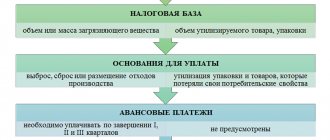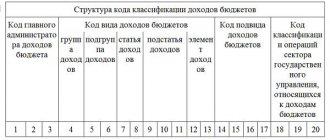Water tax is a specific tax levy that goes to the federal budget. Let's figure it out: who is the payer of this tax levy, which is not often encountered in the practice of an accountant, what are the water tax rates for 2020, what tax reporting is provided in this area. A separate chapter 25.2 of the Tax Code of the Russian Federation is devoted to the rules for calculating water tax. Taxation of the use of water objects is rare in the work of an accountant. We will try to talk about the features of this fiscal payment.
Basis and legal basis
Water tax is a federal direct tax, the legal basis of which is laid down in Chapter 25.2 of the Tax Code of the Russian Federation.
This chapter, and with it the water tax itself, was introduced in 2005. Before this time, there was another tax - a fee for the use of water bodies, which was paid on the basis of the Federal Law of May 6, 1998 N 71-FZ “On fees for the use of water bodies” (now this law has lost force). Since 2007, a new Water Code came into force, which narrowed the circle of water tax payers by abolishing the licensing system for the use of surface water bodies. The right to use such objects is now acquired on the basis of a water use agreement or a decision to provide water objects for use, that is, within the framework of contractual civil legal relations. And for the use of a water body or part of it, a non-tax fee is charged - it’s called a fee for the use of water bodies. Article 333.8 of the Tax Code has also undergone changes in connection with these innovations - it has been supplemented with a clause according to which organizations engaged in water use on the basis of agreements or decisions on the provision of water bodies for use, concluded and adopted after the entry into force of the Water Code of the Russian Federation, are not recognized as payers of water tax .
We can say that the water tax is gradually being replaced by a non-tax payment for the use of water bodies.
Legal liability
For failure to fulfill tax payment obligations, violators are subject to penalties established by the provisions of the Tax Code of the Russian Federation.
Article 119: Provides legal liability for failure to file tax returns. Violators face:
- Failure to submit insurance calculations or tax returns to the territorial authority within the established time limits. A fine of 5% for each month of the overdue period, but not more than 30% and not less than 1,000 rubles.
- A similar offense committed by a person responsible for maintaining tax records and submitting returns. A fine of 1,000 rubles for each overdue month.
Article 120: Provides for liability for gross violations committed in the area of calculating income/expenses and paying mandatory taxes.
Violators face:
- Fine 10,000 rubles if the violation was committed during the 1st reporting period;
- Fine 30,000 rubles if the illegal act was committed for more than 1 reporting period;
- A fine of 40,000 rubles if the illegal action caused a decrease in the tax base.
Here it is necessary to clarify that a gross violation in the field of taxation within the framework of the article in question has the following characteristics:
- Done 2 or more times during a calendar year;
- Lack of primary documentation or invoices;
- Inaccurate display of information.
Taxpayers
Taxpayers of water tax are organizations and individuals engaged in special or specific water use in accordance with the legislation of the Russian Federation, recognized as an object of taxation.
Organizations and individuals who use water on the basis of water use agreements or decisions on the provision of water bodies for use, respectively, concluded and adopted after the entry into force of the Water Code of the Russian Federation (it came into force on January 1, 2007) are not recognized as taxpayers.
The Water Code provides for two grounds for the use of water bodies: a water use agreement and a decision to provide a water body for use.
a fee of the same name is charged on the basis of an agreement .
Objects of taxation
Water tax
The following types of use of water bodies are recognized as objects of taxation by water tax:
- water intake from water bodies;
- use of water areas, with the exception of timber rafting in rafts and bags;
- use of water bodies without water intake for hydropower purposes;
- use of water bodies for the purpose of rafting wood in rafts and purses.
The following are not subject to taxation:
- abstraction from underground water bodies of water containing minerals and (or) natural medicinal resources, as well as thermal waters;
- abstraction of water from water bodies to ensure fire safety, as well as to eliminate natural disasters and the consequences of accidents;
- water intake from water bodies for sanitary, environmental and shipping releases;
- intake of water from water bodies by sea vessels, inland and mixed (river-sea) vessels to ensure the operation of technological equipment;
- abstraction of water from water bodies and use of water areas for fish farming and reproduction of aquatic biological resources;
- use of water bodies for navigation on ships, including small boats, as well as for one-time landings (take-offs) of aircraft;
- use of the water area of water bodies for the placement and parking of swimming facilities, placement of communications, buildings, structures, installations and equipment for carrying out activities related to the protection of water and aquatic biological resources, protection of the environment from the harmful effects of water, as well as the implementation of such activities on water bodies ;
- use of the water area of water bodies for state monitoring of water bodies and other natural resources, as well as geodetic, topographical, hydrographic and survey work;
- use of the water area of water bodies for the placement and construction of hydraulic structures for hydropower, land reclamation, fishery, water transport, water supply purposes and for drainage purposes;
- use of water areas for organized recreation by organizations intended exclusively for the maintenance and service of disabled people, veterans and children;
- use of water bodies for dredging and other work related to the operation of navigable waterways and hydraulic structures;
- use of water bodies to meet the needs of national defense and state security;
- abstraction of water from water bodies for irrigation of agricultural lands (including meadows and pastures), watering of horticultural, gardening, summer cottage land plots, land plots of citizens' personal subsidiary plots, for watering and servicing livestock and poultry, which are owned by agricultural organizations and citizens;
- abstraction of mine and collector-drainage waters from underground water bodies;
- use of water bodies for fishing and hunting.
Payment for the use of water bodies
The list of grounds for providing water bodies for use on the basis of an agreement (for which a fee is charged for the use of water bodies) is established in Art. 11 of the Water Code:
- intake (withdrawal) of water resources from surface water bodies;
- use of water areas, including for recreational purposes;
- use of water bodies without abstraction (withdrawal) of water resources for the purpose of producing electrical energy.
Other types of water use are provided for use either on the basis of decisions, or do not require either the conclusion of an agreement or a decision at all.
New water tax, but is it new?
There is a lot of speculation on the topic of a new water tax in 2021, and the “theorists” have already combined into one “legal proceeding” an increase in state budget expenditures, constitutional amendments, and COVID-19. According to their theory, all this influenced the fact that the use of groundwater will now be paid, because it is subsoil. The first thing I would like to clarify is that, indeed, the use of subsoil is a paid service, but this has always been the case and will remain so in 2021! At all times, a corresponding license was obtained for the use of subsoil, which clearly defined the conditions, terms and volumes of use of natural resources, and groundwater is the most natural subsoil. However, in the law “On Subsoil” there has long been Article 19 , which reads:
Owners of land plots have the full right to use for their own (non-commercial) purposes common minerals and groundwater (in a volume of no more than 100 m3/day) that are located within the boundaries of their plots.
This article has not gone away and is still “alive and well”, which means we continue to use personal wells on our plots for free (subject to the limit of 100 m3/day and when used for personal (non-commercial) purposes, of course). We also safely draw water for irrigation of our plots from nearby water bodies, since this action is not subject to taxation.
Tax base for water tax
The tax base for water tax is determined depending on the type of water use and for each water body separately:
- when withdrawing water, the tax base is determined as the volume of water taken from a water body during the tax period based on the readings of water measuring instruments, and in their absence - according to water consumption standards;
- when using water areas, the tax base is determined as the area of the provided water space according to the license, and in case of its absence - according to the technical and design documentation;
- when using water bodies without water intake for hydropower purposes, the tax base is determined as the amount of electricity produced during the tax period;
- When rafting timber in rafts and purses, the tax base is determined as the product of the volume of wood rafted during the tax period, in thousands of cubic meters. meters and rafting distance in km, divided by 100.
Let us draw your attention once again - the tax base is calculated for each water body separately! This means that, for example, when water is withdrawn from several rivers, the tax base is calculated for each river. And it doesn’t matter that tax rates for these river basins may be the same. If different rates are established for a water body, the tax base is determined in relation to each tax rate.
Calculation example
How to calculate water tax? In order to better understand the features of calculating water tax, it is worth considering this using a specific example.
Let's say, located in the Northern Economic Region, it uses water from underground sources of the Neva River for its own needs.
During the first quarter of 2015, the company used the following volumes:
- in January - 10,000 cubic meters. m.;
- in February - 11,000 cubic meters. m.;
- in March - 12,000 cubic meters. m.
This data is confirmed by the readings of measuring instruments. The total volume of water used for the quarter is:
OB = 10,000 + 11,000 + 12,000 = 33,000 cubic meters. m.
The Tax Code on water tax for this economic region and this river sets a rate of 348 rubles, the tax base is 1000 cubic meters. m. Let's calculate the amount payable:
VN = 33 * 348 = 11,484 rubles.
However, this is not the final amount, since it must be adjusted by a factor:
VN = 11,484 * 1.15 = 13,207 rub.
This is exactly how much will be paid in the first quarter of 2015 for the use of river resources.
However, the amount may be higher if there is a water use limit.
Let's say in this example it is 30,000 cubic meters. m per quarter (or 120,000 cubic meters per year). In this case, the tax will be calculated differently:
VN = (30 * 348 + 3 * 348 *5) * 1.15 = 18,009 rub.
Since the limit was exceeded by 3000 cc. m., an increased rate was applied to the excess amount - 5 times more than usual. Therefore, the final amount will be higher by 4802 rubles.
Read other articles about taxes:
- For mining.
- For the gambling business.
- For the payroll.
- Unified agricultural tax.
- Land.
- For the property of organizations.
- For small business.
Payment base for fees for the use of water bodies
Rates, the procedure for calculating and collecting fees for the use of water bodies are established depending on the owner of the water body: by the Government of the Russian Federation, state authorities of the constituent entities of the Russian Federation or local governments.
For water bodies that are federally owned, these issues are regulated by the Decree of the Government of the Russian Federation of December 14, 2006 N 764. According to it, the payment base is established in the water use agreement for each type of use of water bodies and is determined separately for each water body or part thereof.
The payment base is:
- for payers who withdraw water resources from water bodies or parts thereof - the volume of permissible withdrawal of water resources, including the volume for transfer to subscribers, for the payment period;
- for payers using water bodies or parts thereof without withdrawing water resources for hydropower purposes - the amount of electricity produced during the payment period;
- for payers using water areas of water bodies or parts thereof - the area of the provided water area of the water body or part thereof.
If water bodies are owned by a constituent entity of the Russian Federation, then the rules for them must be established by that same constituent entity.
Features of VN calculation for 2021: main formulas used
Calculation of VN is carried out in the same manner according to the standard general formula: tax base (BN) * rate (SN) * multiplier (MN). If it is necessary to use an additional increasing multiplier, the bet is calculated taking it into account.
In relation to a specific situation, the standard calculation procedure may be slightly modified. During the calculation process, other formulas may be needed.
| Formulas for purposes | applied calculations | ||
| valid rate | quarterly VN when collecting water for sale | quarterly VN for water supply to the population | quarterly water supply in the absence of measuring instruments for water intake |
| base rate * multiplier | water intake volume indicator (other) * rate | volume of water intake * 141 rubles. | limit * rate * 1.1 |
The payer calculates the VAT independently every quarter, after which the result is displayed in the declaration.
Tax and payment periods
The tax period for water tax is quarterly.
Accordingly, it is necessary to pay the water tax and submit reports on it quarterly (no later than the 20th day of the month following the reporting quarter).
As for fees for the use of water bodies , the rates, procedure for calculating and collecting such fees are established depending on the owner of the water body by the Government of the Russian Federation, state authorities of the constituent entities of the Russian Federation or local governments.
For federally owned water bodies, the payment period is a quarter and is paid at the place of use of the water body no later than the 20th day of the month following the expired payment period.
Common mistakes made by declarants when preparing and submitting reports
Error 1. The declaration must be completed and submitted by all VN payers. This norm is defined by the Tax Code of the Russian Federation, has not changed for 2021 and is applied everywhere.
Individuals and foreign organizations are no exception. They are required to submit a copy of the document to the location of the authority that issued their license.
Error 2. Inaccuracies, errors, incompleteness of information or their absence in the declaration are subject to editing and adjustment in a general manner. This means that, as before, the declarant must make appropriate changes to the KND form 1151072 and submit it in an updated form to the Federal Tax Service.
To submit an adjusted declaration, use a form that is approved and used in the period for which the adjustment is made. Since the reporting form for VN has not changed until now, in fact, for 2021, the KND 1151072 form is used in all cases.
Water tax rates and fees for the use of water bodies
Water tax rates are set for river basins, lakes, seas and economic regions in rubles per 1 thousand cubic meters. water taken from surface or underground water bodies - Art. 333.12 of the Tax Code of the Russian Federation.
From 2021, water tax rates are indexed to 1.52. These changes were introduced into the Tax Code by Federal Law No. 366-FZ of November 24, 2014, which provides for annual indexation of tax rates until 2025. When water is withdrawn in excess of the established quarterly (annual) water use limits, tax rates for such excess are set at five times (also taking into account the coefficient of 1.52 in 2017).
The tax rate for water withdrawal for water supply to the population in 2017 is set at 107 rubles per thousand cubic meters of water taken from a water body.
Rates of payment for the use of water bodies, as well as the procedure for its calculation and payment, are established depending on the owner of the water body by the Government of the Russian Federation, state authorities of the constituent entities of the Russian Federation or local governments. For water bodies that are federally owned, payment rates for the use of water bodies are established by Decree of the Government of the Russian Federation of December 30, 2006 N 876.
The fee rates for the use of water bodies owned by St. Petersburg are approved by St. Petersburg Government Decree No. 1007 dated August 17, 2007, and are:
- For the withdrawal of water resources from surface water bodies located within the boundaries of the Neva basin, within the limits of permissible withdrawal established by the water use agreement - 258 rubles. for 1 thousand cubic meters m of water resources.
- For the withdrawal of water resources from surface water bodies located within the boundaries of the river basins of the Baltic Sea basin (with the exception of the Neva), within the limits of permissible withdrawal established by the water use agreement - 282 rubles. for 1 thousand cubic meters m of water resources. Z
- For the withdrawal of water resources from surface water bodies for drinking and domestic water supply to the population within the limits of permissible withdrawal established by the water use agreement - 70 rubles. for 1 thousand cubic meters m of water resources.
- For the use of surface water bodies or their parts - 33.96 thousand rubles. for 1 sq. km of used water area per year.
Who pays the water tax?
So since the use of groundwater for commercial purposes has long been paid, then what happens, the burden of water tax in 2021 is a news canard?
Not quite so, or rather just, as usual, the desire to make a mountain out of a molehill and make an exceptional sensation by dispelling panic.
Yes, indeed, on January 1, 2021, the so-called “water amnesty” expired, but few people understand what this really means. Let me explain.
217-FZ added to the list of subsoil plots of local importance areas used for the purposes of domestic water supply to SNT and ONT (not for commercial purposes), which means now you will have to pay for the use of public wells in SNT and ONT. Those. it is necessary to obtain the appropriate license, install meters on the basis of which payments for consumed water will be made (read more in our article: “License for a well in SNT”).
However, the adopted law does not contain a word about wells and wells located on plots owned or personally used by citizens.
Of course, if there is a well on your site with which you extract groundwater for subsequent bottling and sale, you will have to pay for such use of the subsoil. There is still no need to pay for the use of groundwater for your own needs on your personal plot.
Procedure and terms of payment, reporting
The taxpayer must calculate the amount of water tax independently.
The total tax amount is the result of adding the tax amounts calculated for all types of water use.
The tax amount based on the results of each tax period is paid at the location of the taxable object no later than the 20th day of the month following the expired tax period - that is, April 20, July 20, October 20 and January 20, 2021. At the same time, it is necessary to submit a tax return for water tax (it must be submitted to the tax authority at the location of the taxable object).
The water tax is fully credited to the federal budget.
Foreign persons paying water tax must submit a copy of the tax return to the location of the authority that issued the water use license within the deadline established for payment of the tax.
The tax return was approved by order of the Ministry of Finance of the Federal Tax Service of Russia dated November 9, 2015 N ММВ-7-3/ [email protected] It can be submitted both in paper and electronic form - at the choice of the taxpayer. As for the fee for the use of water bodies, the procedure for its payment is established depending on the owner of the water body by the Government of the Russian Federation, state authorities of the constituent entities of the Russian Federation or local governments.
For federally owned water bodies, it is established that payment is made at the place of use of the water body no later than the 20th day of the month following the expired payment period (quarter). It is credited to the federal budget in accordance with the budget legislation of the Russian Federation.
In St. Petersburg, the fee must also be paid no later than the 20th day of the month following the reporting quarter, but this fee is already credited to the budget of St. Petersburg.
As for reporting on fees for the use of water bodies, neither the Water Code nor the adopted Government Resolutions provide for the provision of calculations or any reporting documents by payers.
Please pay attention!
Taxpayers whose average number of employees for the previous calendar year exceeds 25 people, as well as newly created organizations whose number of employees exceeds the specified limit, submit tax returns and calculations only in electronic form.
More information about submitting electronic reporting
A complete list of federal electronic document management operators operating in a certain region can be found on the official website of the Office of the Federal Tax Service of Russia for the constituent entity of the Russian Federation.
Article 50 of the BC RF. Tax revenues of the federal budget (current version)
Tax revenues from the following federal taxes and fees, taxes provided for by special tax regimes are credited to the federal budget:
corporate income tax at the rate established for crediting the specified tax to the federal budget - according to the standard of 100 percent;
corporate income tax (in terms of income of foreign organizations not related to activities in the Russian Federation through a permanent representative office, as well as in terms of income received in the form of dividends and interest on state and municipal securities) - according to the standard of 100 percent;
income tax of organizations when implementing production sharing agreements concluded before the entry into force of the Federal Law of December 30, 1995 N 225-FZ “On Production Sharing Agreements” (hereinafter referred to as the Federal Law “On Production Sharing Agreements”) and not providing for special tax rates for crediting the specified tax to the federal budget and budgets of the constituent entities of the Russian Federation - according to the standard of 25 percent;
value added tax - according to the norm of 100 percent;
paragraphs six through eight are no longer in force as of January 1, 2021. — Federal Law of April 15, 2019 N 62-FZ;
excise duties on alcoholic products with a volume fraction of ethyl alcohol over 9 percent, with the exception of beer, wines, fruit wines, sparkling wines (champagne), wine drinks produced without the addition of rectified ethyl alcohol produced from food raw materials, and (or) alcoholized grape or other fruit must, and (or) wine distillate, and (or) fruit distillate - according to the standard of 20 percent;
excise taxes on tobacco products - according to the standard 100 percent;
The paragraph became invalid on January 1, 2015. — Federal Law of October 4, 2014 N 283-FZ;
The paragraph became invalid on January 1, 2009. — Federal Law of December 30, 2008 N 310-FZ;
excise taxes on passenger cars and motorcycles - according to the standard of 100 percent;
excise taxes on motor gasoline, straight-run gasoline, diesel fuel, motor oils for diesel and (or) carburetor (injection) engines produced in the Russian Federation - according to the standard of 12 percent;
excise taxes on middle distillates produced on the territory of the Russian Federation - according to the standard of 50 percent;
excise taxes on excisable goods and products imported into the territory of the Russian Federation - according to the standard of 100 percent;
tax on the extraction of mineral resources in the form of hydrocarbon raw materials (combustible natural gas) - according to the standard of 100 percent;
tax on the extraction of mineral resources in the form of hydrocarbon raw materials (with the exception of combustible natural gas) - according to the standard of 100 percent;
tax on mineral extraction (except for minerals in the form of hydrocarbons, natural diamonds and common minerals) - at a rate of 40 percent;
tax on mineral extraction on the continental shelf of the Russian Federation, in the exclusive economic zone of the Russian Federation, outside the territory of the Russian Federation - according to the standard of 100 percent;
regular payments for the extraction of mineral resources (royalties) upon implementation of production sharing agreements in the form of hydrocarbon raw materials (combustible natural gas) - according to the standard of 100 percent;
regular payments for the extraction of mineral resources (royalties) upon implementation of production sharing agreements in the form of hydrocarbon raw materials (with the exception of natural gas) - according to the standard of 95 percent;
regular payments for the extraction of mineral resources (royalties) on the continental shelf, in the exclusive economic zone of the Russian Federation, outside the territory of the Russian Federation when implementing production sharing agreements - according to the standard of 100 percent;
fee for the use of objects of aquatic biological resources (excluding inland water bodies) - according to the standard of 20 percent;
fee for the use of objects of aquatic biological resources (for inland water bodies) - according to the standard of 20 percent;
water tax - according to the standard 100 percent;
The paragraph became invalid on January 1, 2010. — Federal Law of July 24, 2009 N 213-FZ;
state duty (except for the state duty for carrying out legally significant actions specified in Articles 56, 61, 61.1, 61.2, 61.3, 61.4 and 61.5 of this Code, the state duty provided for in paragraphs thirty and thirty-one of this article) - according to the standard of 100 percent;
The paragraph became invalid on January 1, 2015. — Federal Law of November 24, 2014 N 374-FZ;
state duty for the performance by federal executive authorities of legally significant actions in the case of filing an application and (or) documents necessary for their implementation to the multifunctional center for the provision of state and municipal services - according to the standard of 50 percent;
state duty for the performance by federal executive authorities of legally significant actions in the case of filing an application and (or) documents necessary for their implementation in electronic form and issuing documents through a multifunctional center for the provision of state and municipal services - according to the standard of 75 percent;
excise taxes on petroleum raw materials sent for processing - according to the standard of 100 percent;
excise taxes on dark marine fuel produced on the territory of the Russian Federation - according to the standard of 100 percent;
tax on additional income from the production of hydrocarbons - according to the standard of 100 percent.
Source: https://www.zakonrf.info/budjetniy-kodeks/50/








